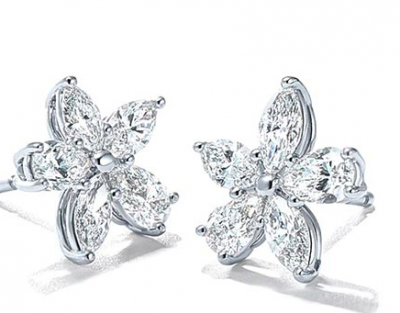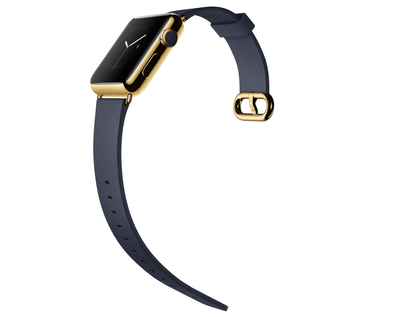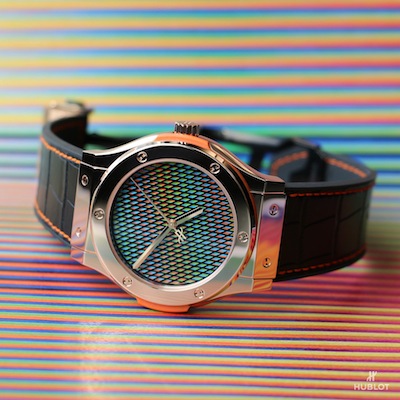Executives pessimistic about future of watch and jewelry industry: L2
Tiffany’s digital IQ dwarfs that of its competitors, according to a new report by L2.
The iconic jeweler scored 157 points, well above the “genius” threshold of 140, on the measure of digital presence and performance. Both ecommerce and smartwatches have and will continue to shake up the sector, but Tiffany’s enormous lead gives it a much bigger cushion against the disruptors than its competitors have.
“Ten to 15 years ago, the introduction of the cellphone was seen as a new, complimentary device to consumers,” said Josh Pham, research lead at L2. “Today, smartwatches are meant to integrate a more technologically-adept buyer with the Internet of Things.
“Beyond the direct competition for wrist space, smartwatches that provide utility beyond time-keeping are looking to make ground on the aesthetic and heritage edge once held by traditional watchmakers,” he said.
“Digital IQ Index: Watches & Jewelry” evaluates the success of site and ecommerce, digital marketing, mobile and tablet and social media marketing initiatives of more than 60 brands in the industry and considers trends within the sector and consumer behavior in general.
Out of the gray
The only other jewelry brand studied to achieve “Genius” status is Cartier, which had a score of 143. For comparison, the difference between Tiffany and Cartier’s scores equals the difference between Cartier and fifth place Pandora or between Pandora and the 15th place.
Most luxury brands fell into the “gifted category,” which encompassed scores from 110 to 139, with David Yurman’s 132 tied with Alex And Ani for third. Swarovski, Chopard, Van Cleef & Arpels, Tag Heuer, Montblanc, Piaget, De Beers, Bulgari, Breitling and Rolex all fell in the “gifted” range, good for the top 17 brands.
Jaeger LeCoultre, Harry Winston, Omega, Baume & Mercier and Hublot all ranked as “average,” while Vacheron Constantin and Boucheron are “challenged.” Blancpain trailed its competitors in the luxury space with a 66 score, placing it 49th overall and the first among brands in the “feeble” category.
A high digital IQ is important in all luxury sectors because ecommerce and mobile commerce are growing much quicker than in-store revenue, but the importance may be even higher in the jewelry and watch sectors. Forty percent of Swiss watch executives are pessimistic about the sector’s economic outlook while only 14 percent are optimistic.
This pessimism is explained, or at least compounded by a fear of smartwatches. Despite the Apple Watch’s relative underperformance, 6 million Apple Watches still means $3 billion that is not going into the luxury watch sector.
Exacerbating the shakeup, the offline jewelry and watch sector looks very different. Ten brands account for 44 percent of offline revenue and 10 brands account for 75 percent of online traffic, but only Tiffany, Rolex and Omega are prominent in both channels.
Offline, those brands each have 6 or 7 percent of the marketshare, behind only Cartier’s leading 10 percent. Online, Omega and Rolex are at 4 and 5 percent, respectively, behind a handful of brands including second-place Alex and Ani’s 13 percent and Tiffany’s staggering 23 percent.
This strong positioning both online and offline positions Tiffany ahead of others in the field. With gray market results such as Chrono24 and Jomashop occupying a sizable percentage of top search results (both paid and organic, with a share that actually increases with more specific queries), the visibility Tiffany affords itself compared to competitors will likely prove valuable as ecommerce continues to grow.
“The luxury watches and jewelry space presents a unique conundrum because the current imbalance between online and offline equity does not necessarily represent a deathblow to brands,” Mr. Pham said. “Rather than reinventing themselves online, brands should still remain focused on core business fundamentals such as providing high-touch custom service through online communication and appointment booking, making inventory accessible for browsing online or protecting SKUs from grey marketers on search.”
Tiffany leads the pack thanks to unmatched SEO, successful video promotions and effective cross-channel integration methods, such as the “Concierge of Love” Valentine’s Day campaign (see story). Cartier, for its part, leads in YouTube engagement and effectively utilizes sponsorships to extend its reach on the platform.
SEO is particularly important because the majority of U.S. luxury buyers research watch and jewelry products online before they purchase. However, much of the research ends up diverting consumers to gray market sites because many jewelers and watch brands are unclear about pricing – 80 percent of jewelers display prices online and a mere 53 percent of watchmakers do. Only Tiffany receives more monthly unique visitors than Jomashop.
Watchmakers and jewelers have made significant improvements in mobile optimization over the past two years, with only two index brands lacking mobile-optimized sites in 2015, compared to 28 percent in 2014 and 38 percent in 2013. Forty-six percent operate mobile commerce sites compared to 53 percent who sell jewelry or watches on desktop sites.
Within digital commerce, mobile commerce is the fastest grower by a significant margin. Although not popular among consumers yet, a brand that is able to encourage consumers to make use of Visa Checkout or Apple Pay on its mobile site could quickly find itself with a new set of loyal customers.
Brands are innovating on mobile in other ways. Cartier, for example, offers a filter that will limit displayed merchandise to those available for online purchase. Similar innovations that make it easy on the customer will be increasingly necessary to compete with Apple, whose business model is founded on convenience.
Mobile-first
Previous L2 Digital IQ reports have emphasized the importance a mobile-first mindset has to Genius-level brands.
Mobile commerce growth of 33 percent is projected for 2016 and 2017, and around two-thirds of Genius brands have mobile apps. Search-engine marketing is another significant part of mobile success, and all Genius brands own their first mobile branded search result, and Tiffany was highlighted for its strong search-engine marketing.
Being mobile-first also means success on social media. Genius’ Instagram communities are more than twice the size of non-Genius brands’ and those followers are more likely to engage. Around one-third are on Snapchat, one-third make use of user-generated content on sites and product pages and two-thirds are on WeChat, recognizing the necessity of tapping into large consumer markets on the consumer’s preferred platforms (see story).
Mobile commerce creates myriad opportunities for retailers, but they must first accommodate consumers’ concerns, according to a recent report by Boston Retail Partners.
Sixty-one percent of Internet usage in the United States is on mobile devices, and mobile commerce, already one-third of ecommerce sales, is set to grow over two-and-a-half times as fast as total online sales. Although mobile commerce has been seen as a lagging point for retailers, most are focusing resources on improving mobile sites and implementing other mobile-based strategies over the next few years (see story).
Although mobile is a strong candidate for the next place jewelers should aim to improve, these things are always easier to suggest in theory than execute successfully.
“Largely, the industry consists of slow movers still beginning to experiment while a select few have double-down investments,” Mr. Pham said. “Incremental investments that tie both offline retail footprint with online channels represent a significant opportunity moving forward.”
Final Take
Forrest Cardamenis, editorial assistant on Luxury Daily, New York




